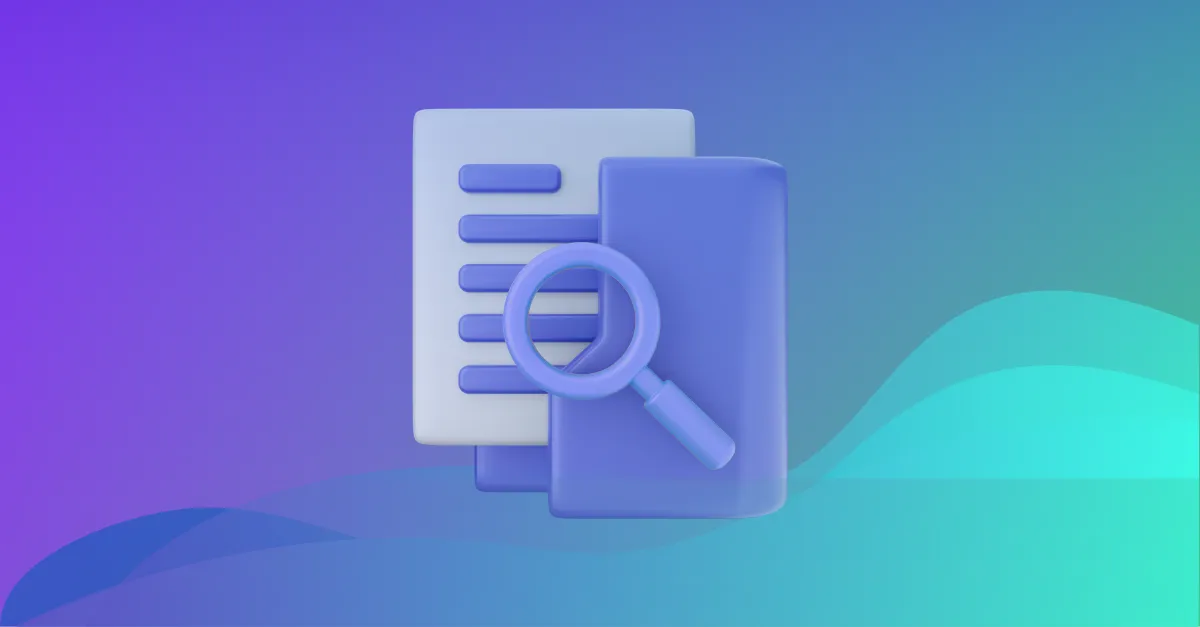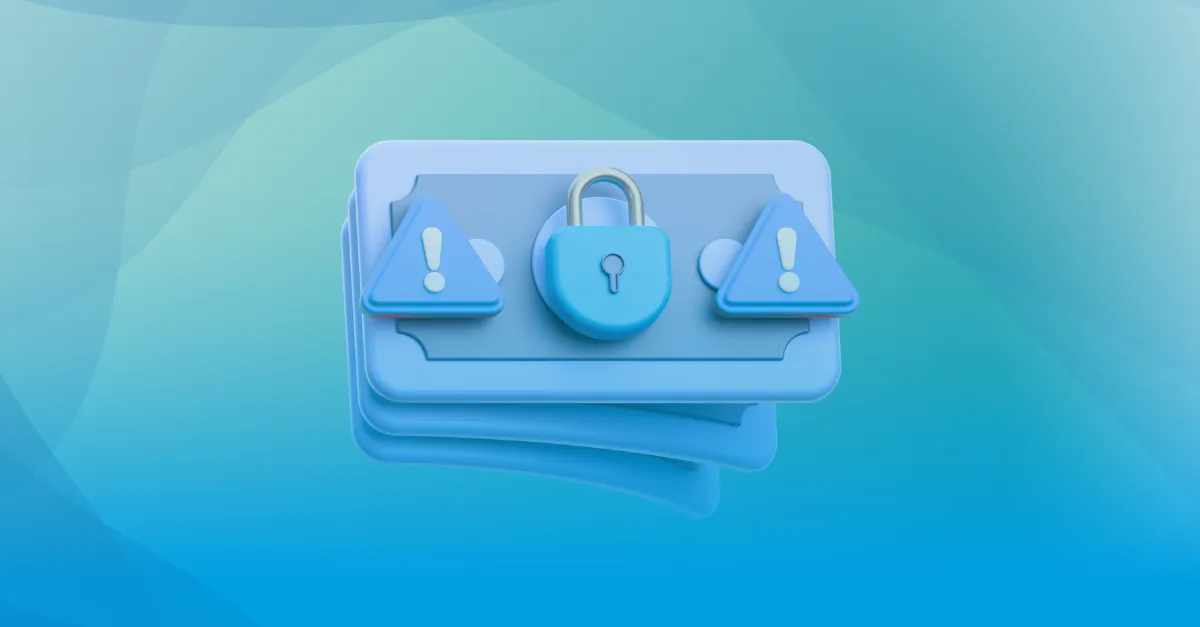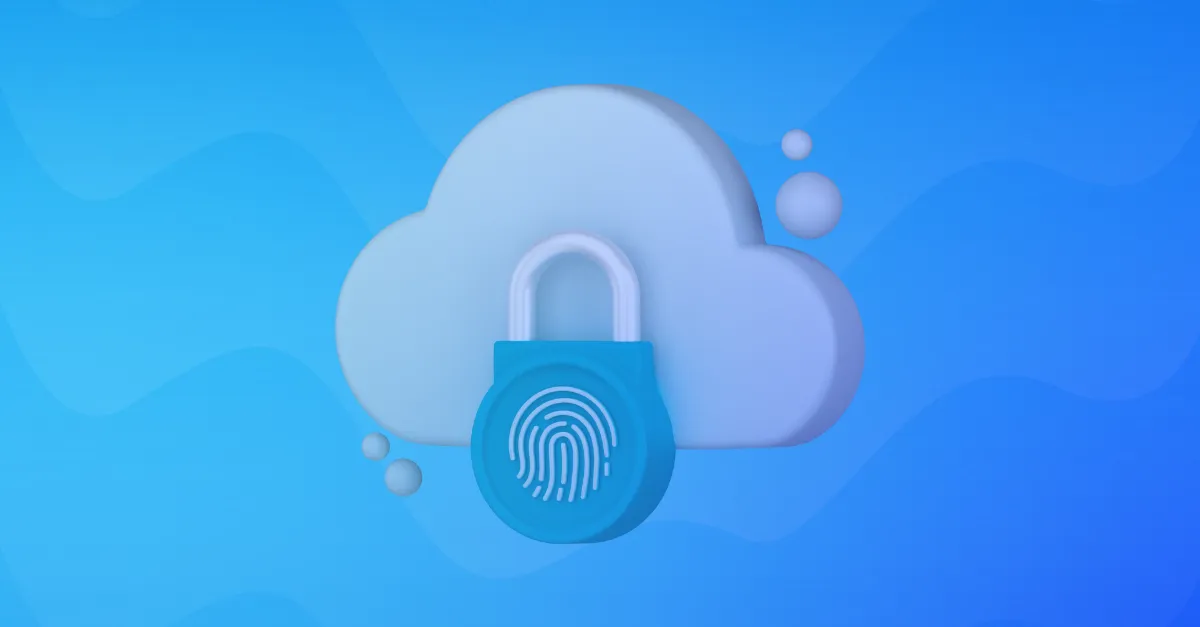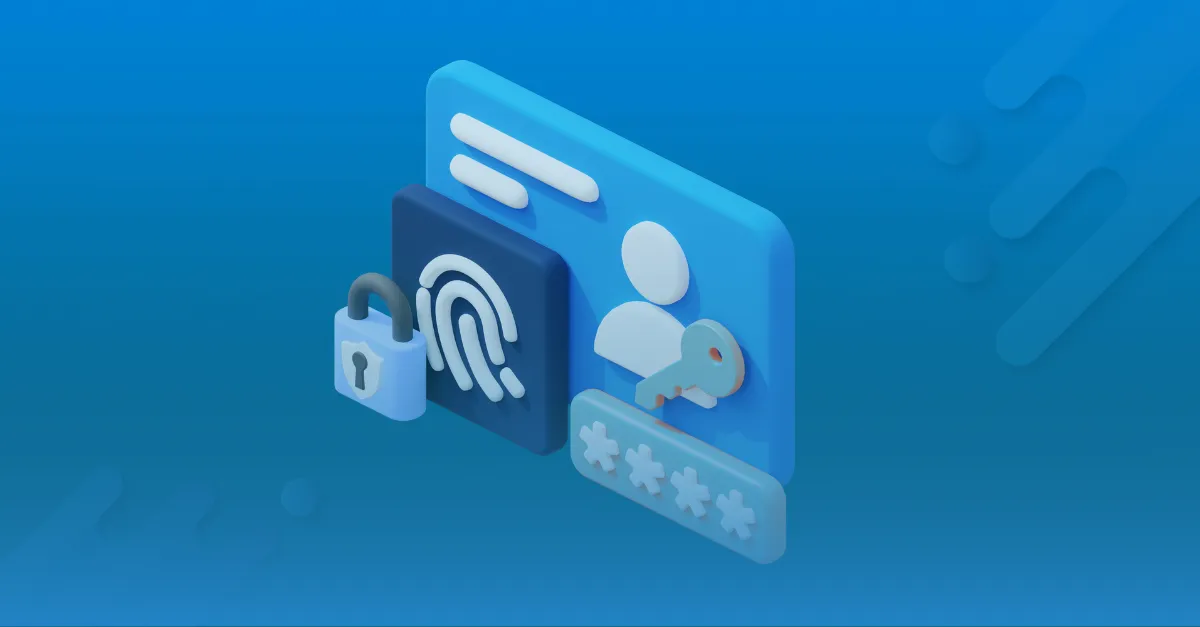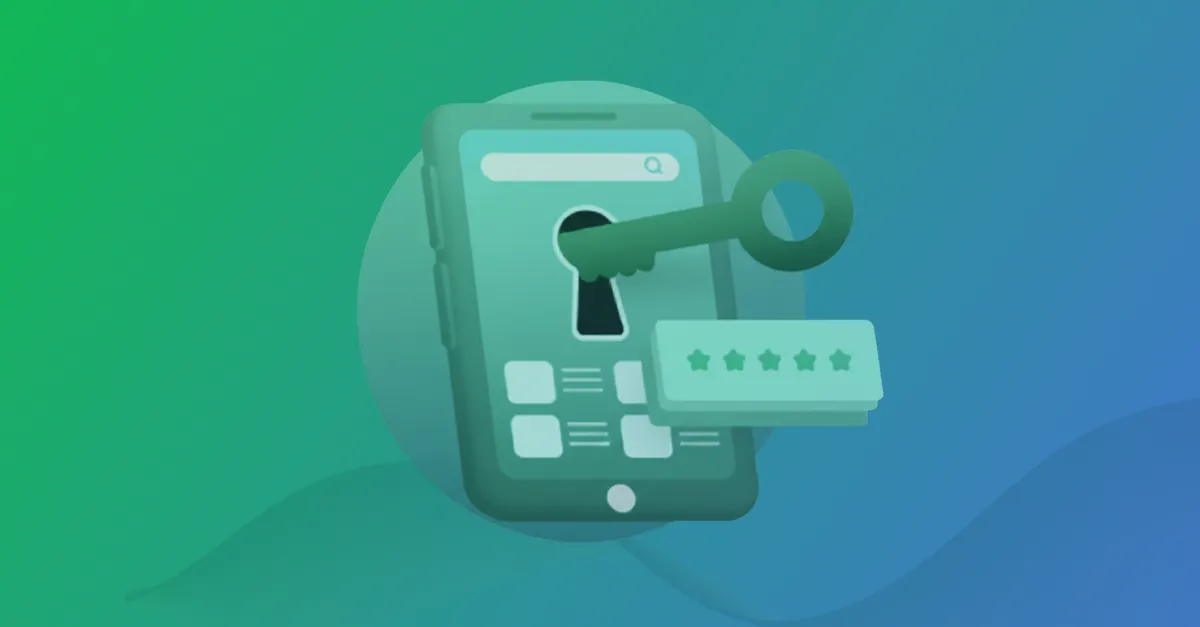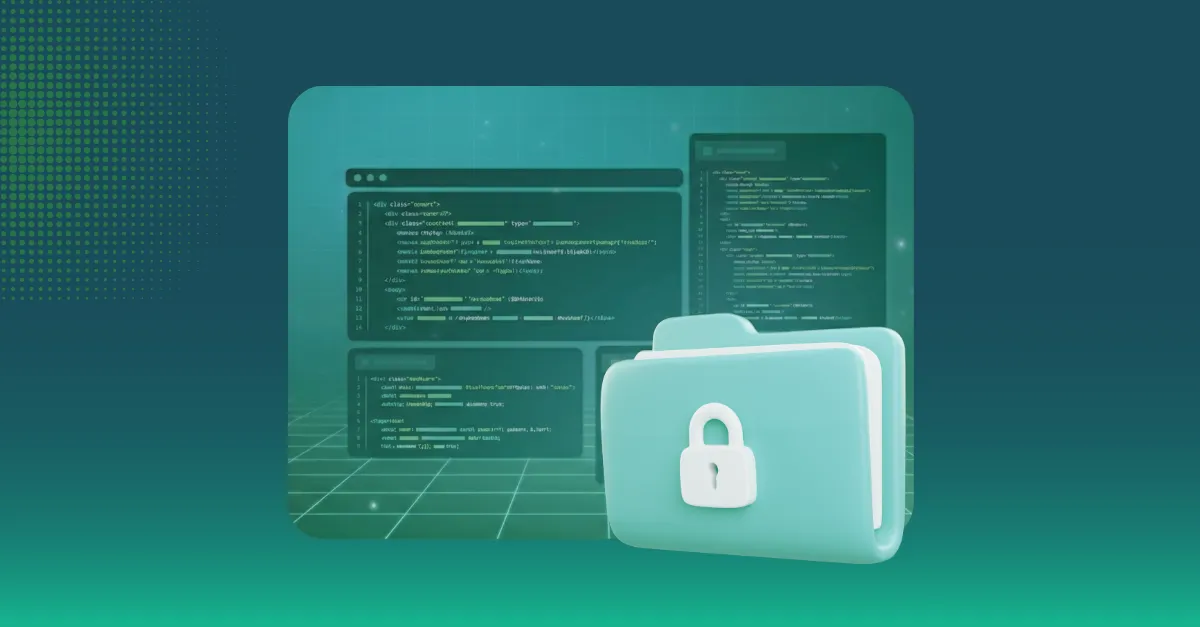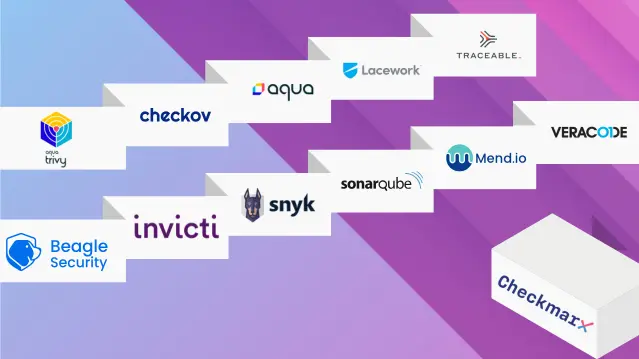
When it comes to application security, Checkmarx has long been one of the most recognized names in the industry. Known for its deep coverage across static application security testing (SAST), dynamic application security testing (DAST), software composition analysis (SCA), and its unified Checkmarx One platform, it has established itself as a leader for large enterprises and heavily regulated industries.
Over the past decade, Checkmarx has been widely adopted by Fortune 500 companies, government institutions, and financial organizations that need strong compliance features and centralized governance. Its reputation for comprehensive coverage and its ability to consolidate multiple testing capabilities into one solution have made it a go-to choice for enterprises with complex security needs.
But as application security evolves and organizations face tighter budgets, the question in 2025 is not whether Checkmarx is a well-established player, but whether it delivers enough value to justify its cost. With rising competition from modern tools that are AI-driven, developer-first, and more affordable, security leaders are rethinking their investment in traditional platforms.
In this blog, we will explore Checkmarx’s major products, their capabilities, and highlight modern alternatives like Beagle Security, Snyk, Mend.io, and Veracode that may deliver stronger value at more transparent pricing.
Checkmarx SAST
Checkmarx SAST is one of the company’s flagship solutions, designed to identify vulnerabilities in source code before applications are compiled or deployed. It allows organizations to catch security issues early in the software development lifecycle, which is often the most cost-effective point to remediate problems. By enabling developers and security teams to analyze uncompiled code, it provides a proactive approach to addressing risks.
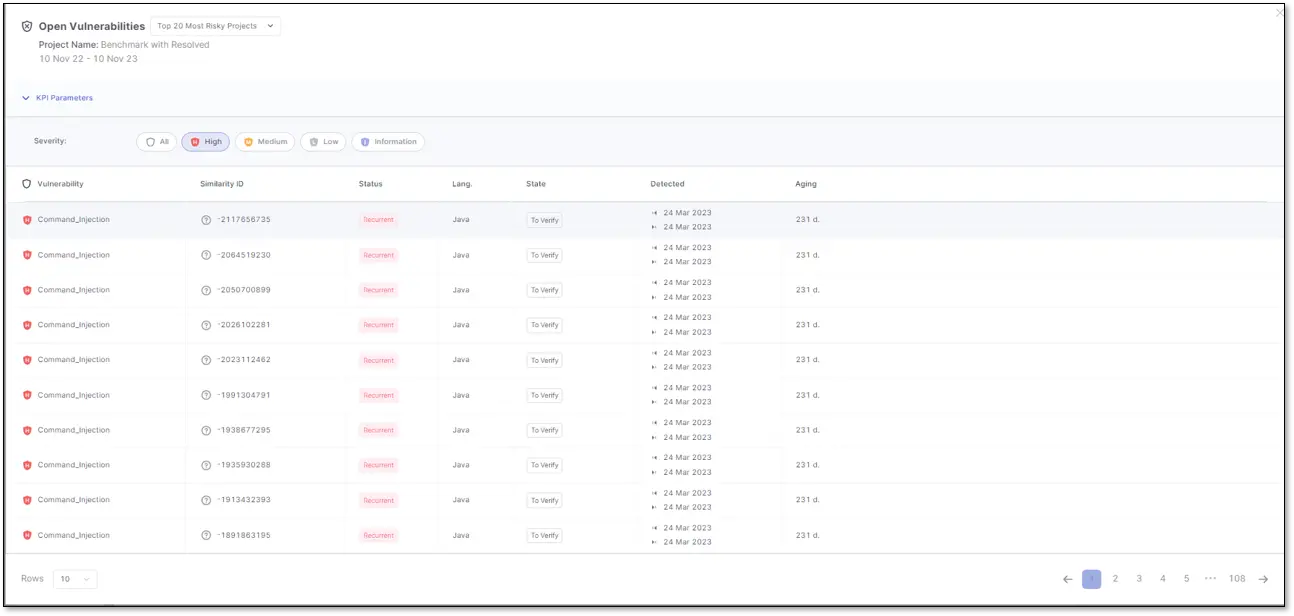
This solution is particularly popular with enterprises that manage large and diverse codebases across many programming languages. For heavily regulated industries, Checkmarx SAST also plays an important role in ensuring compliance by detecting flaws that could lead to major data breaches.
Key features of Checkmarx SAST
Supports 35+ programming languages and 80+ frameworks
AI-powered query builder to customize scan queries
Incremental scanning for faster results
Best fix location recommendations to help developers prioritize remediation
Integration with CI/CD pipelines and popular IDEs
Best Checkmarx SAST alternative: Snyk Code
Snyk Code is a modern, developer-first alternative to Checkmarx SAST. It is widely adopted by teams looking for real-time code scanning that integrates directly into developer workflows, allowing security to shift left into everyday development activities.
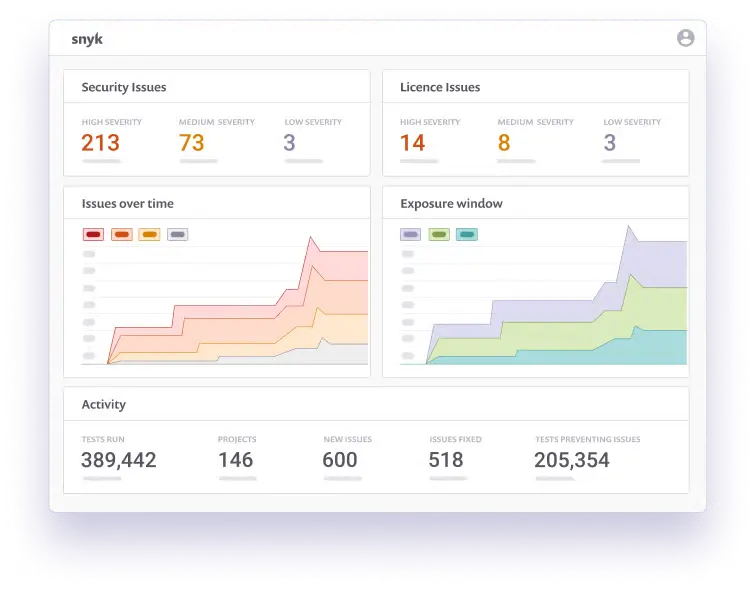
Unlike Checkmarx’s quote-based model, Snyk offers transparent pricing and quick onboarding, making it especially attractive to startups, mid-market companies, and agile development teams.
Key features of Snyk Code
Real-time scanning directly in IDEs for immediate feedback
AI-powered fix suggestions and contextual guidance
Integration with SCM, CI/CD, and ticketing systems
Broad support for programming languages and frameworks
Pricing
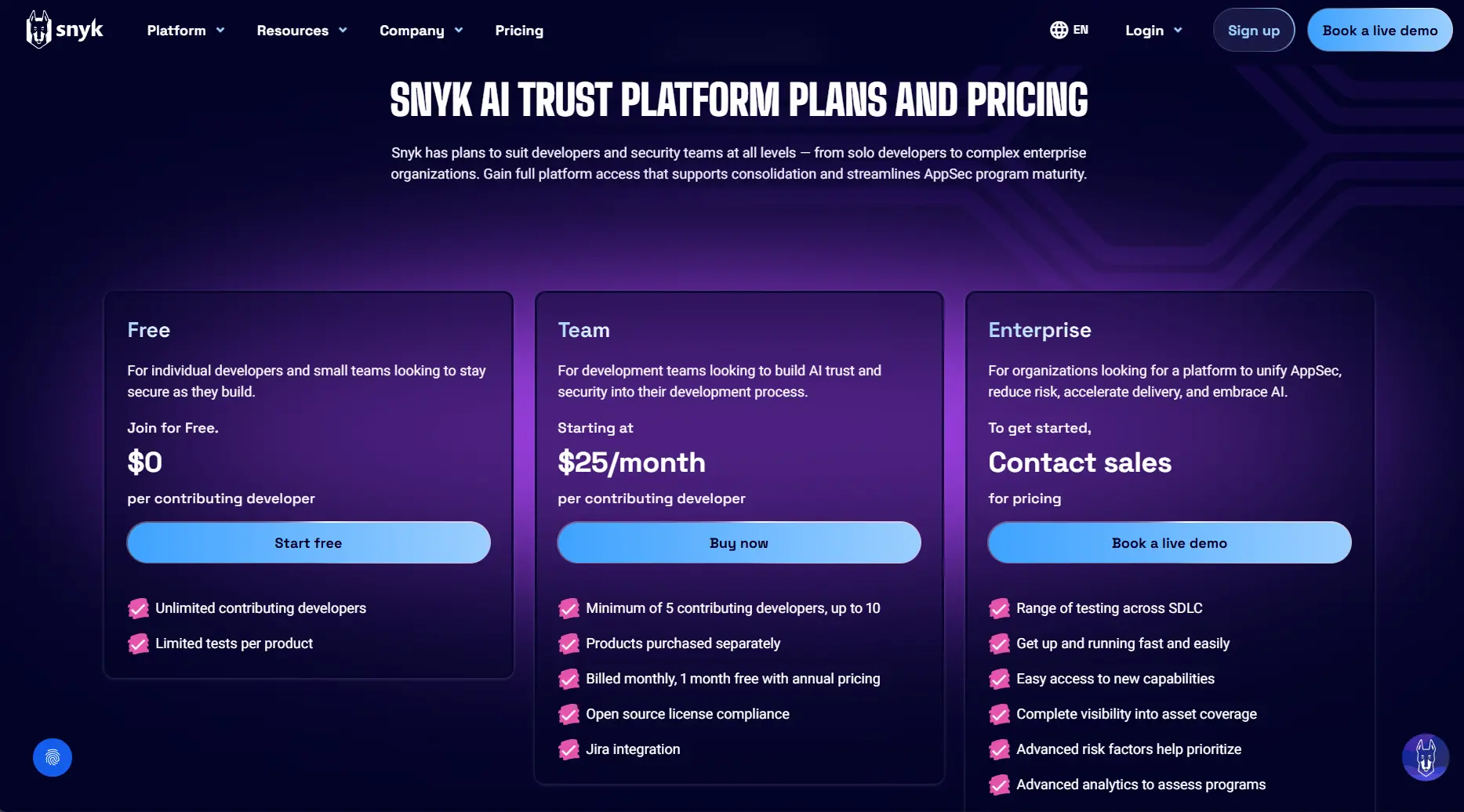
Free tier available
Paid plans start at $25 per user per month (annual billing)
Enterprise contracts typically range from $5,000 to $35,000+ per year for 50 developers, depending on modules
Ratings and reviews
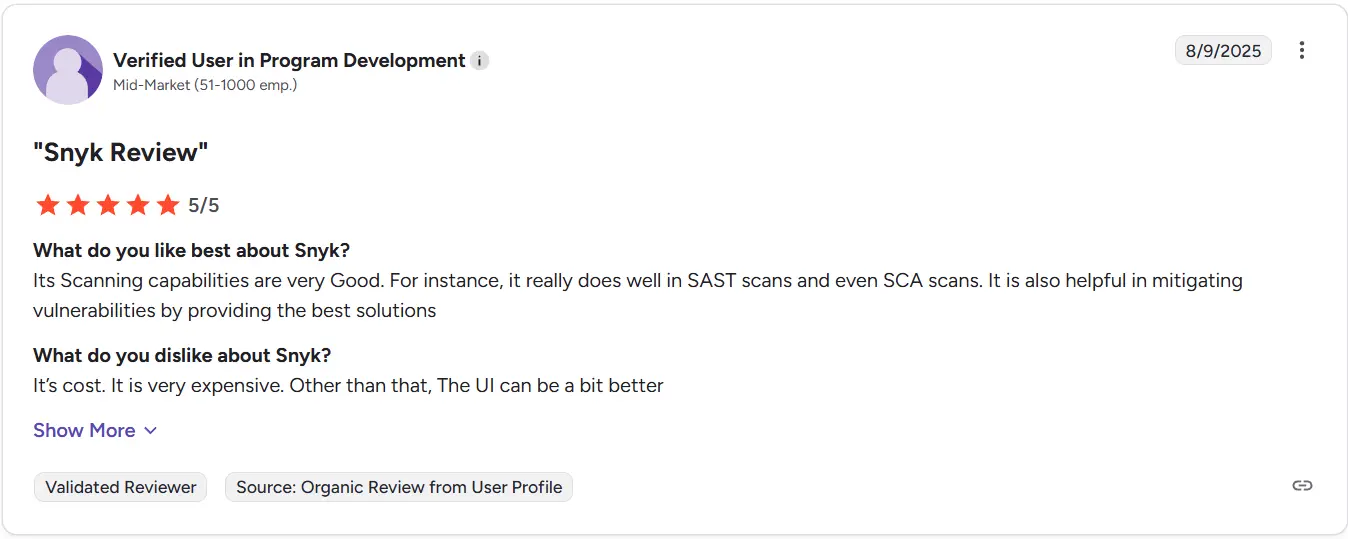
Snyk has a G2 rating of 4.6/5. Users praise its developer-friendly design, seamless integration with workflows, and actionable remediation guidance. Many highlight how its real-time scanning makes it easier to catch vulnerabilities during development rather than after release. Some reviews note that while the pricing can rise quickly at enterprise scale, its speed, usability, and transparent model make it one of the most effective SAST tools available today.
Checkmarx DAST
Checkmarx DAST focuses on analyzing running applications to identify vulnerabilities in real-world conditions. Unlike static testing, it interacts with a deployed application the same way an attacker might, uncovering issues that only appear at runtime. This makes it an important layer of protection for organizations deploying customer-facing apps and APIs.
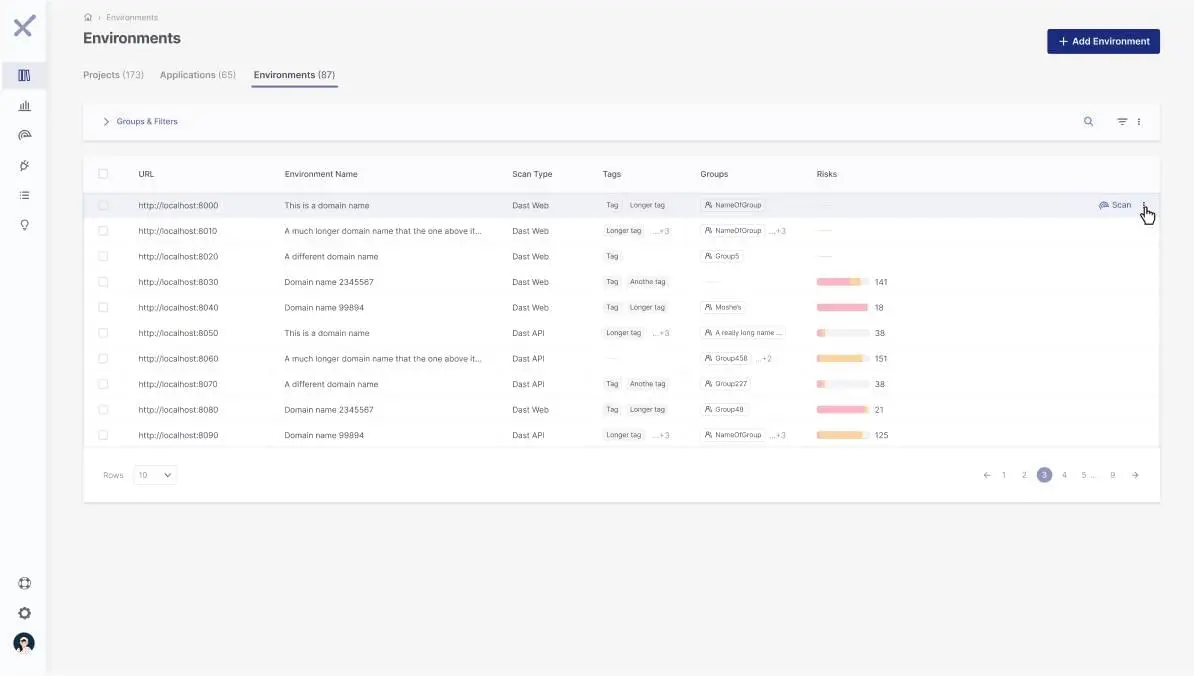
It is designed for enterprises with large web application portfolios and includes support for modern authentication flows, such as single sign-on and multi-factor authentication. Checkmarx markets its DAST solution as a powerful component of its broader unified platform, Checkmarx One, where findings can be correlated with other scan types.
Key features of Checkmarx DAST
Detects vulnerabilities in running web applications
Advanced authentication handling including MFA and SSO
Support for APIs including REST, SOAP, and gRPC
Risk-based prioritization of findings
CI/CD integration for automated scans
Best Checkmarx DAST alternative: Beagle Security
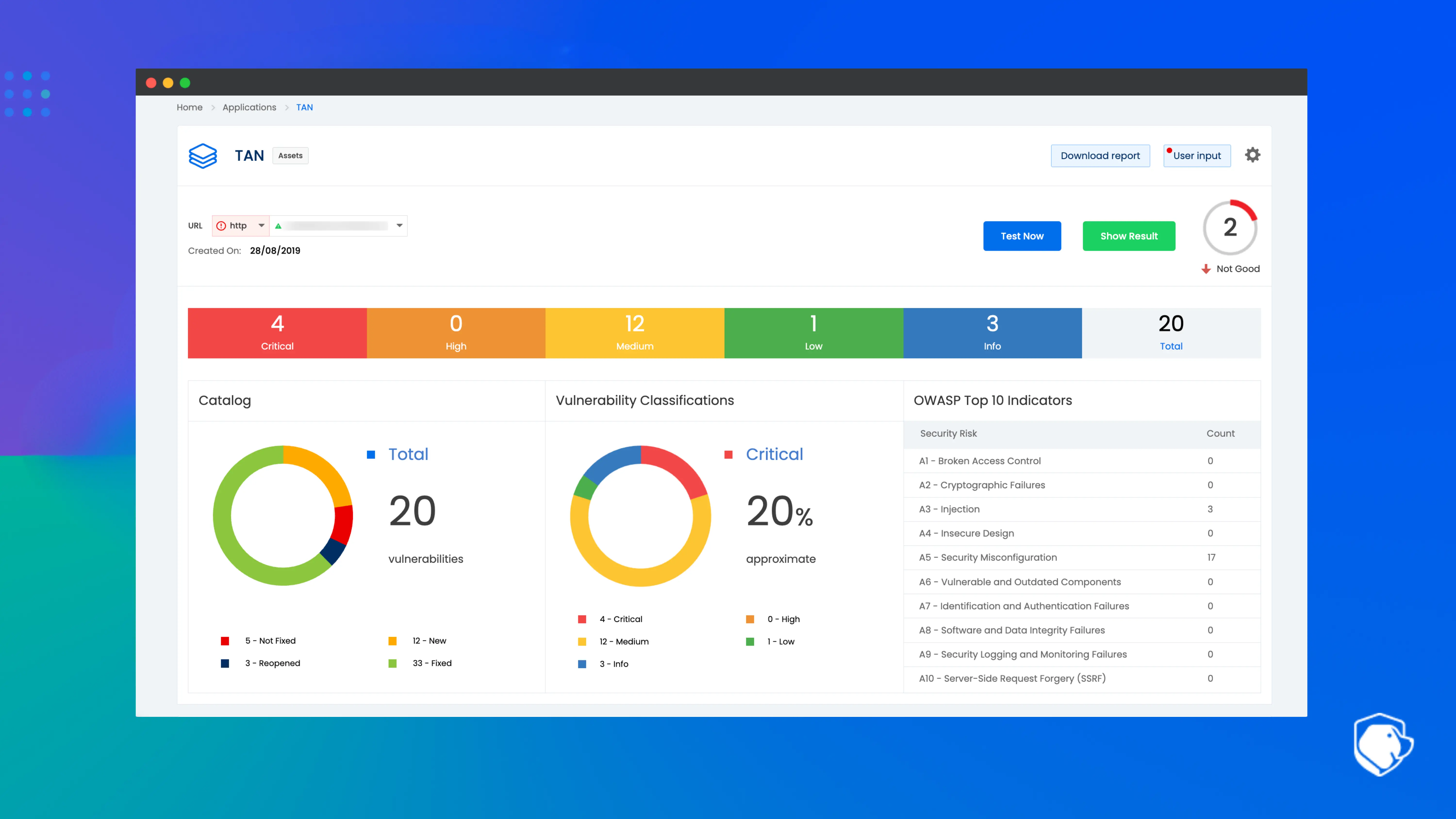
Beagle Security is a modern, AI-driven alternative to Checkmarx DAST. Designed for realistic attack simulations, it goes beyond traditional vulnerability scanning by testing how an application would stand up against real-world exploitation attempts. With advanced API testing, AI-driven attack logic, and developer-friendly reports, Beagle Security has become a preferred option for agile teams and enterprises seeking transparent pricing and quick results.
Key features of Beagle Security
AI-powered penetration testing with real-world attack simulation
Advanced support for GraphQL and REST APIs
Automatic handling of authentication including 2FA
Developer-friendly reporting with clear remediation steps
Seamless CI/CD and Jira integration
Pricing
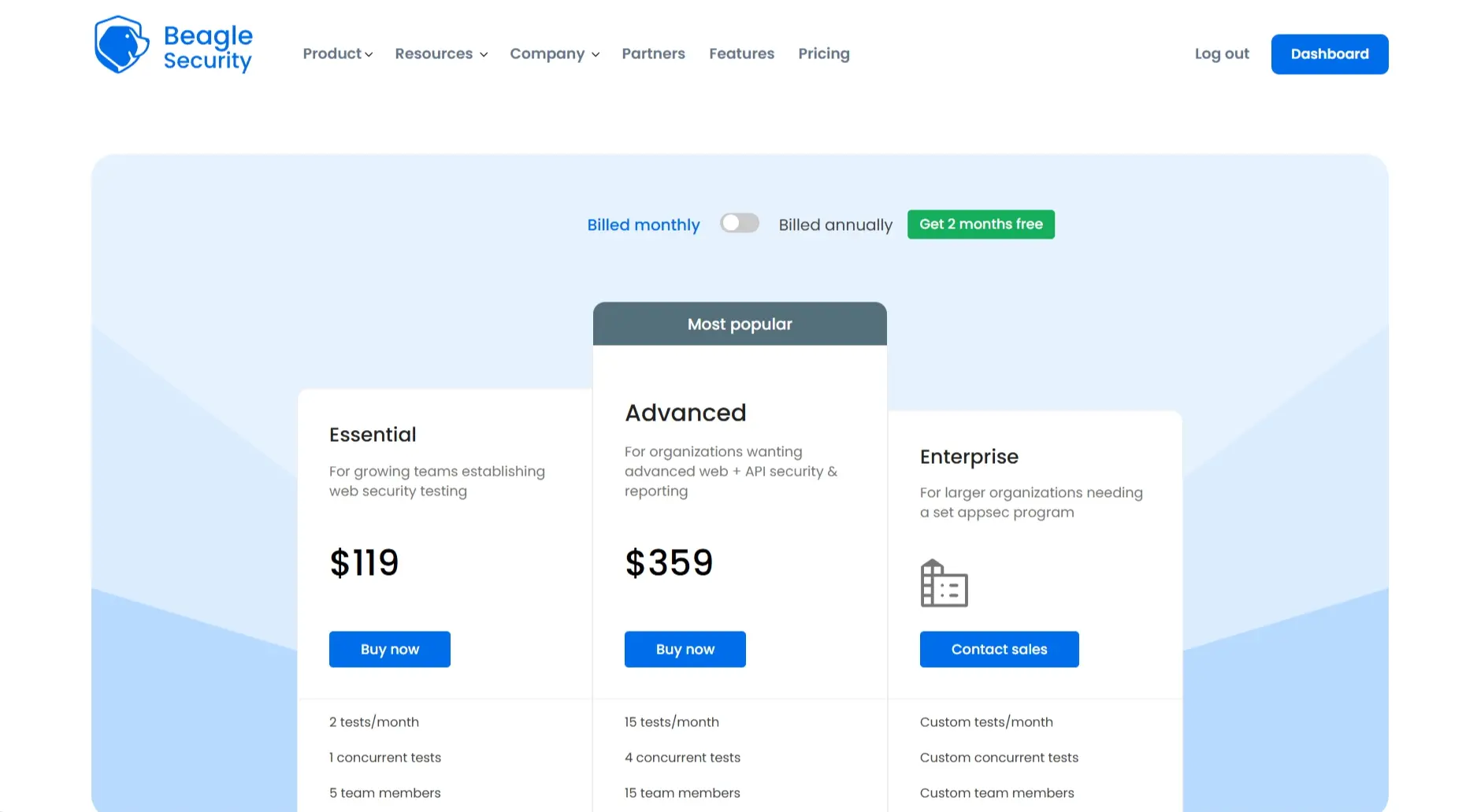
Starts at $119 per month ($1,188 per year)
Enterprise plans start at $6,850 per year
14-day free trial available
Ratings and reviews
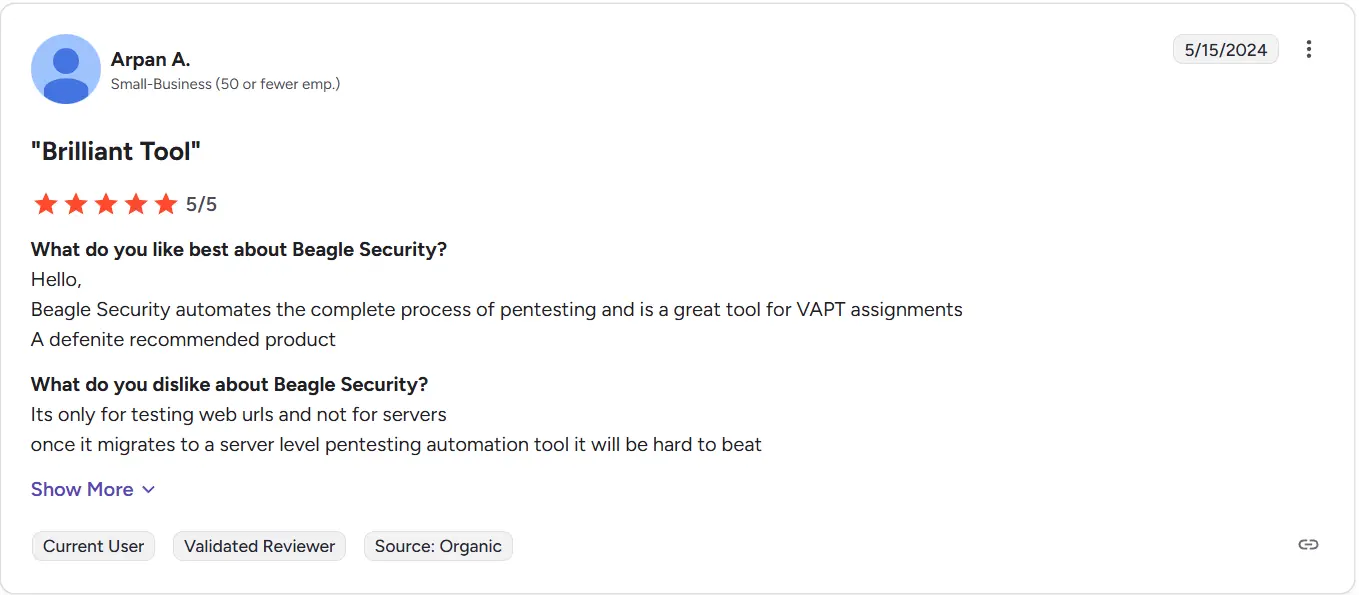
Beagle Security has a G2 rating of 4.7/5. Users highlight its ease of setup, accuracy with minimal false positives, and developer-friendly reports. Many reviews emphasize how quickly Beagle integrates into workflows, with minimal configuration needed even for complex application flows. This makes it a strong alternative for companies prioritizing speed, modern application coverage, and cost-effectiveness.
Checkmarx SCA
Checkmarx SCA is designed to identify risks in open-source dependencies, which represent one of the biggest sources of vulnerabilities in modern software. Beyond vulnerability detection, it also manages licensing issues and detects malicious packages, helping organizations secure their supply chains.
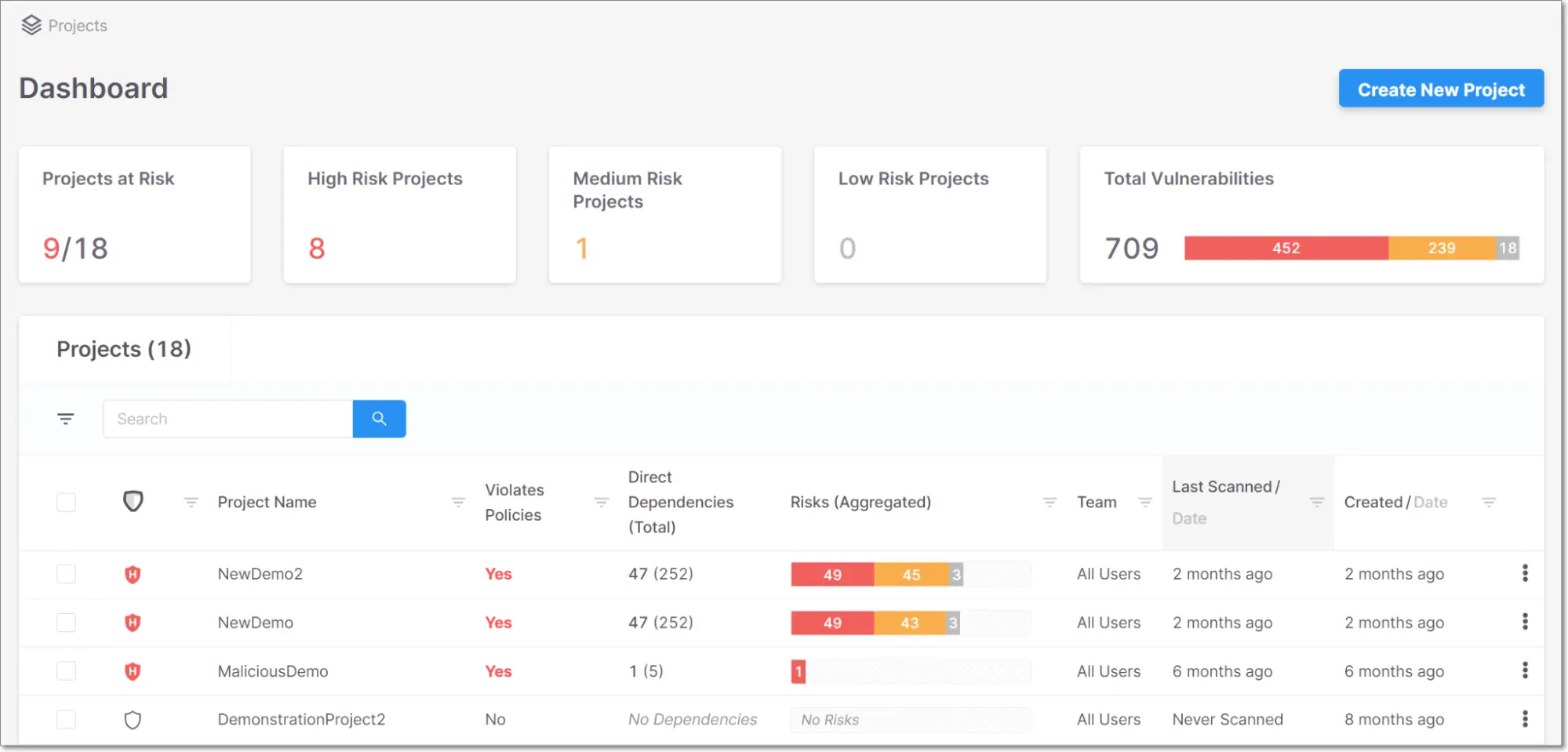
Because SCA is bundled as part of Checkmarx One, it appeals to organizations looking for consolidated governance and centralized reporting across both proprietary and open-source components.
Key features of Checkmarx SCA
Scans over one million open-source packages monthly
Identifies vulnerabilities and license compliance risks
SBOM generation for compliance requirements
Exploitable path analysis to prioritize actionable issues
Malicious package protection add-ons
Best Checkmarx SCA alternative: Mend.io
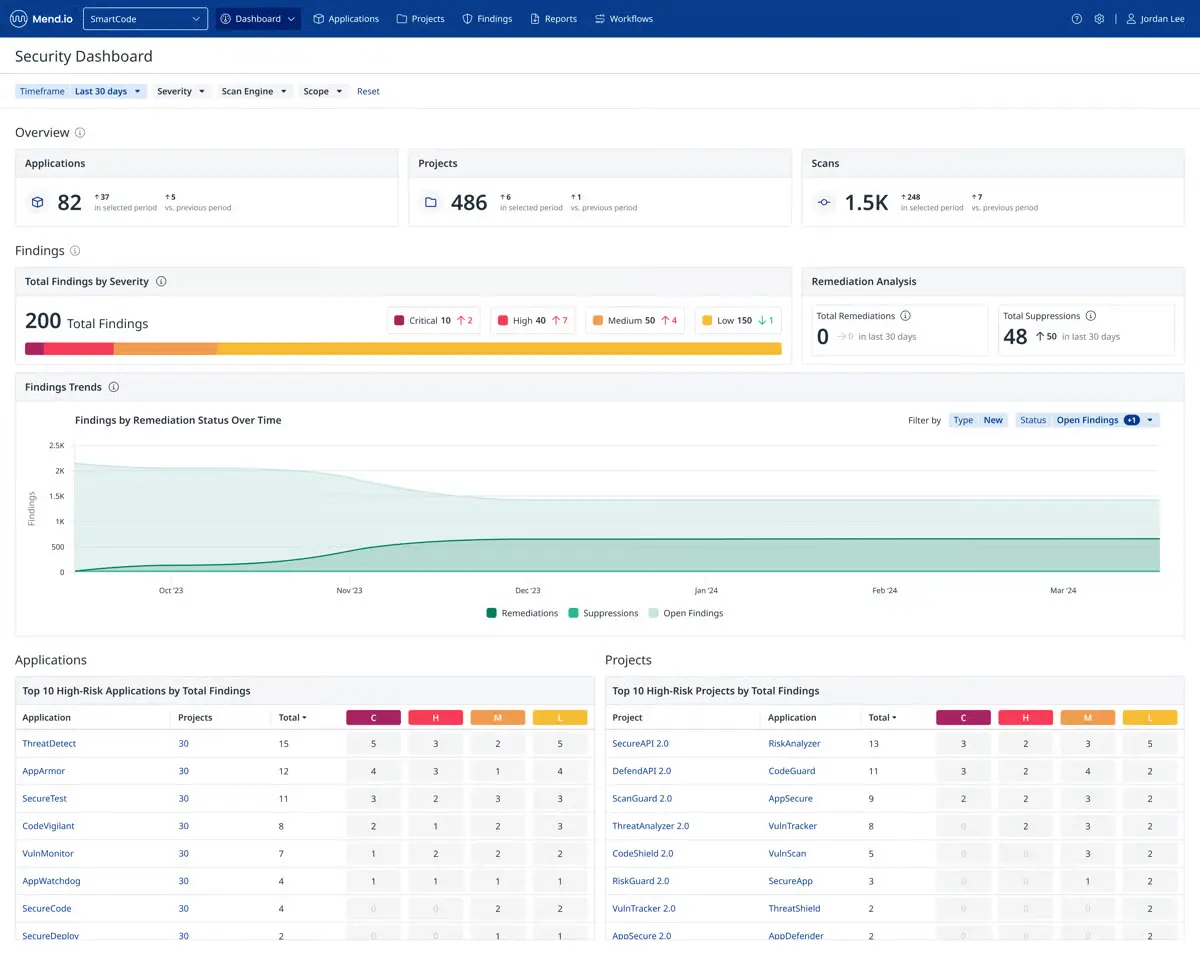
Mend.io (formerly WhiteSource) is one of the strongest names in software composition analysis, helping organizations manage risks in open-source software. It offers transparent pricing and developer-friendly features that make it attractive to teams who want clear cost structures and responsive support without enterprise pricing complexity.
Key features of Mend.io
Comprehensive vulnerability detection with CVSS 4.0 scoring
AI-powered exploitability analysis to cut down false alerts
License compliance management
Seamless integration into CI/CD and developer workflows
Pricing
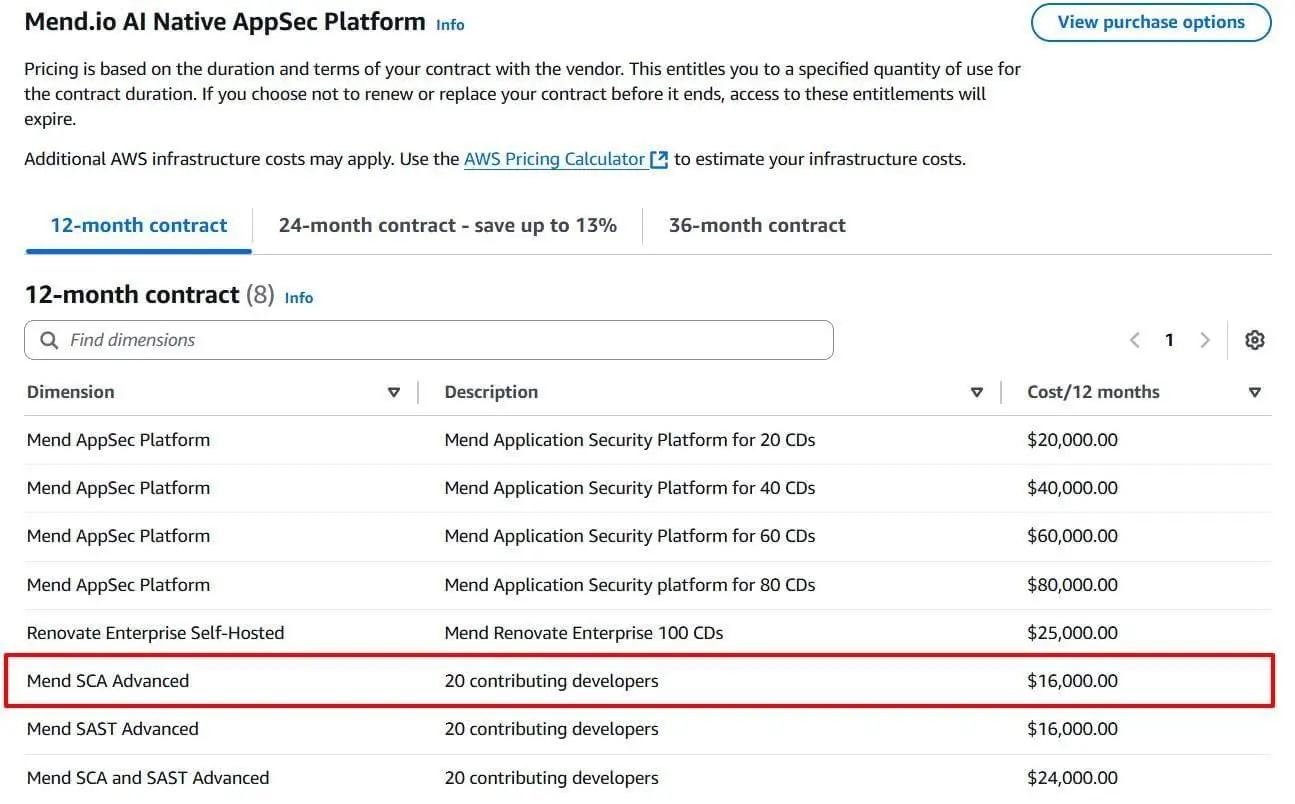
Team plans start at $960 per month
Enterprise pricing is quote-based, depending on scale and additional features
Ratings and reviews
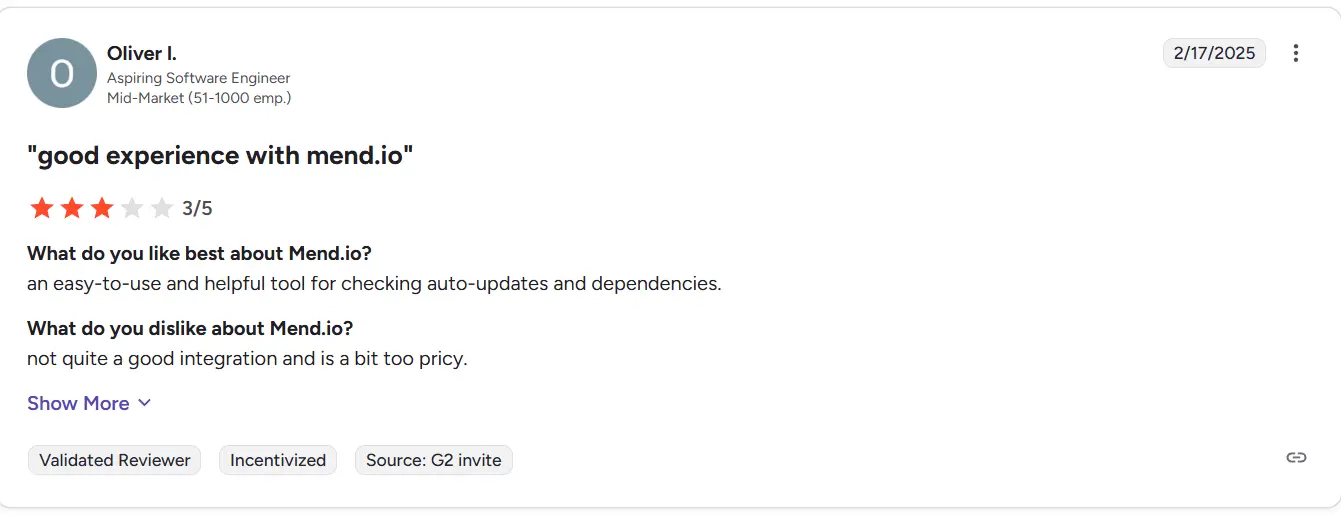
Mend.io has a G2 rating of 4.5/5. Users praise its ease of integration, clear reporting, and responsive customer support. Some note that large-scale deployments can require careful planning, but it consistently stands out for its transparency and ability to provide actionable insights into open-source risks.
Checkmarx One
Checkmarx One is the company’s unified platform, bundling its full range of application security tools into a single cloud-native solution. It is designed for large enterprises that want centralized governance and reduced tool sprawl, making it easier to manage SAST, DAST, SCA, IaC security, and API testing from one platform.
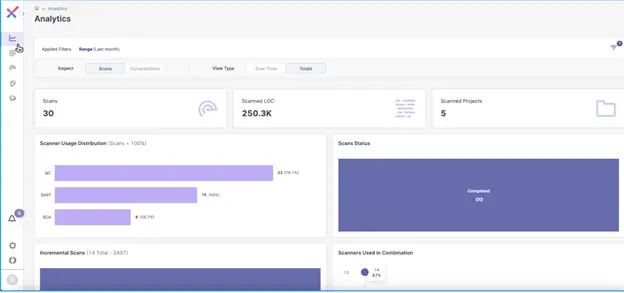
By providing a single pane of glass, Checkmarx One appeals to CISOs and compliance-driven organizations that value governance, analytics, and enterprise scalability over cost efficiency.
Key features of Checkmarx One
Unified SAST, DAST, SCA, and API security coverage
Container and IaC scanning
Fusion engine to correlate results across tools
Compliance and governance dashboards
Scales across large application portfolios
Best Checkmarx One alternative: Veracode
Veracode is one of the strongest unified alternatives to Checkmarx One. It delivers SAST, DAST, and SCA capabilities in a cloud-native platform, with a strong emphasis on compliance automation and enterprise governance. Organizations that value detailed policy enforcement and regulatory support often choose Veracode as a competitor to Checkmarx.
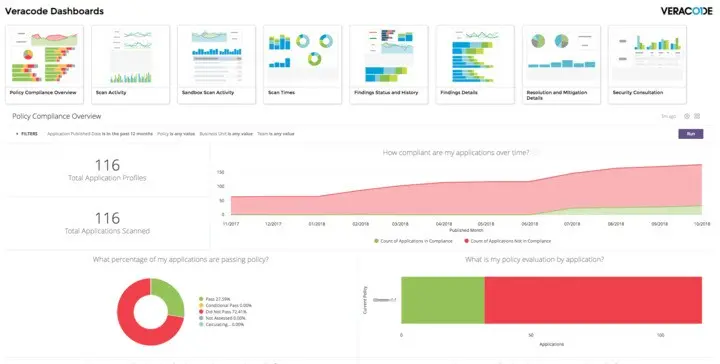
Key features of Veracode
Cloud-based platform with SAST, DAST, SCA, and API security
Advanced compliance and governance automation
Detailed remediation guidance and developer training modules
Low false positive rates (around 1 percent)
Integrations across CI/CD, IDEs, and workflows
Pricing
SAST: $10,000-$15,000 per year (up to 100 apps)
SCA: From $12,000 per year
DAST: $20,000-$25,000 per year for mid-sized portfolios
Full enterprise suite: Typically $100,000+ per year
Ratings and reviews
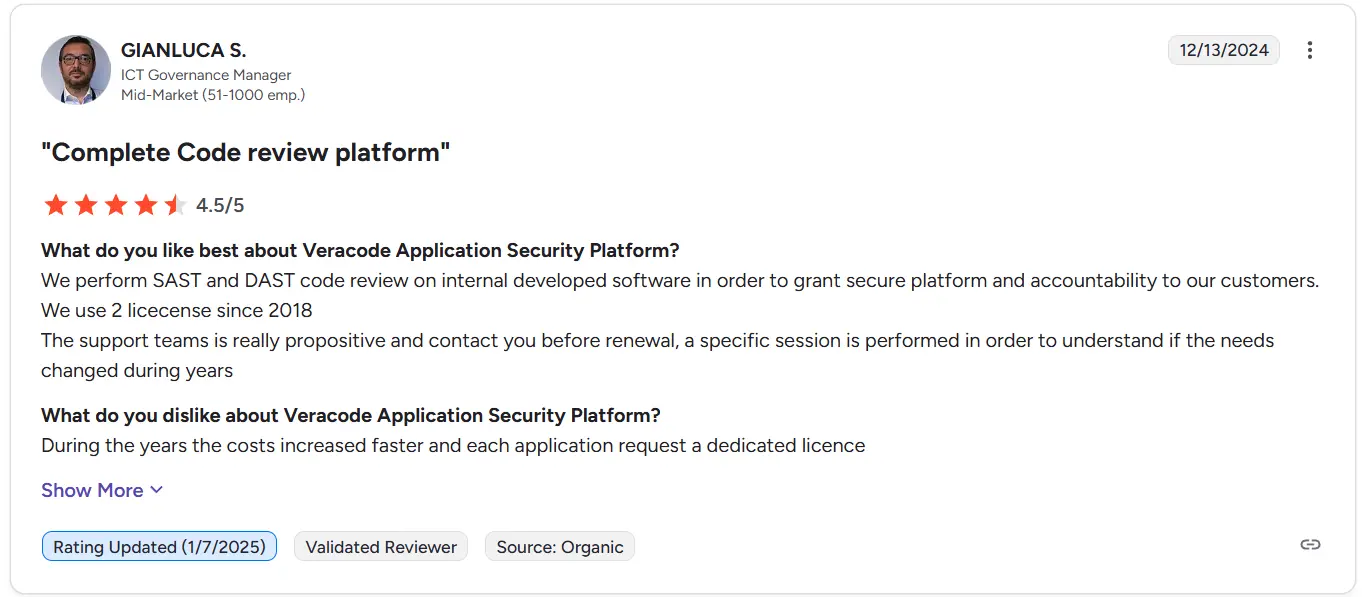
Veracode has a G2 rating of 3.9/5. Customers value its unified approach and strong compliance reporting, especially for regulated industries. However, many reviews point out that its licensing model is complex and that support response times can lag compared to newer vendors. It is best suited for enterprises where compliance and governance are top priorities.
Factors influencing Checkmarx pricing
Checkmarx uses a quote-based pricing model, which makes it difficult to estimate costs without engaging directly with sales. However, several factors significantly influence the overall cost of ownership:
Number of contributing developers - Licensing is tied to active developers committing code, meaning costs scale as teams grow.
Repository size and count - Repositories exceeding one million lines of code count as multiple repositories, driving up costs for large codebases.
Product tier and add-ons - Advanced features like AI protection, Codebashing, or malicious package protection add to the base price.
Deployment model - Cloud-native deployments are the default, while on-premise setups may incur additional infrastructure and maintenance expenses.
Support and training - Premium support packages can add 20 percent or more to the subscription fee, with extra costs for training programs.
Contract duration - Multi-year agreements often provide discounts but also increase vendor lock-in.
These pricing factors make Checkmarx particularly expensive for organizations with large teams, big codebases, or advanced compliance requirements.
Is Checkmarx pricing worth it in 2025?
Checkmarx continues to be a leader in application security in 2025, but its pricing and complexity mean it is best suited for large enterprises with substantial budgets and mature AppSec programs. For these organizations, the platform’s value lies in consolidating multiple tools, reducing management overhead, and offering governance at scale.
For smaller organizations and agile teams, however, the return on investment is less clear. Modern alternatives such as Beagle Security, Snyk Code, Mend.io, and Veracode provide equally strong capabilities at significantly lower and more predictable costs. They are also easier to adopt, with faster setup times and developer-friendly workflows that align better with modern DevSecOps practices.
Ultimately, whether Checkmarx pricing is worth it depends on organizational size, compliance needs, and strategy. If your priority is centralization and vendor consolidation, Checkmarx remains a solid, though costly, choice. But for most SMBs and even mid-market enterprises, the best-of-breed alternative approach offers stronger value, greater flexibility, and a better fit for today’s development-driven security culture.
![Top 20 cybersecurity consulting firms [2025] Top 20 cybersecurity consulting firms [2025]](https://beaglesecurity.com/blog/images/blog-banner-two-840.webp)

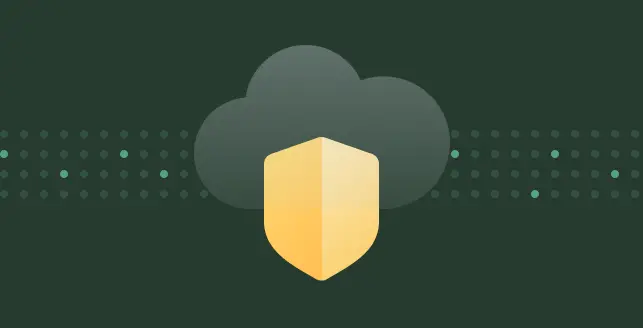

![Top 10 penetration testing companies [2025] Top 10 penetration testing companies [2025]](https://beaglesecurity.com/blog/images/blog-banner-three-840.webp)
